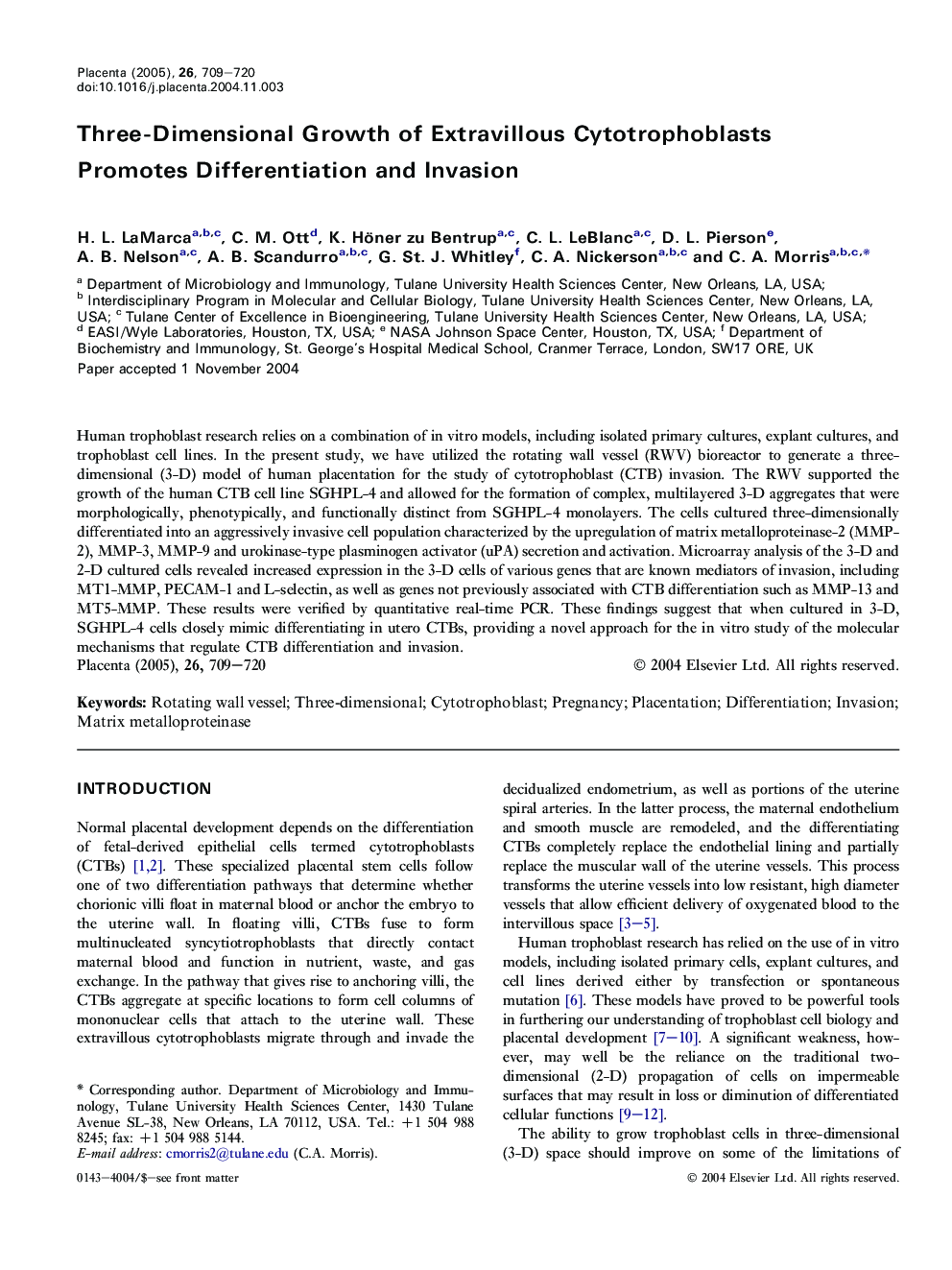| Article ID | Journal | Published Year | Pages | File Type |
|---|---|---|---|---|
| 9109118 | Placenta | 2005 | 12 Pages |
Abstract
Human trophoblast research relies on a combination of in vitro models, including isolated primary cultures, explant cultures, and trophoblast cell lines. In the present study, we have utilized the rotating wall vessel (RWV) bioreactor to generate a three-dimensional (3-D) model of human placentation for the study of cytotrophoblast (CTB) invasion. The RWV supported the growth of the human CTB cell line SGHPL-4 and allowed for the formation of complex, multilayered 3-D aggregates that were morphologically, phenotypically, and functionally distinct from SGHPL-4 monolayers. The cells cultured three-dimensionally differentiated into an aggressively invasive cell population characterized by the upregulation of matrix metalloproteinase-2 (MMP-2), MMP-3, MMP-9 and urokinase-type plasminogen activator (uPA) secretion and activation. Microarray analysis of the 3-D and 2-D cultured cells revealed increased expression in the 3-D cells of various genes that are known mediators of invasion, including MT1-MMP, PECAM-1 and L-selectin, as well as genes not previously associated with CTB differentiation such as MMP-13 and MT5-MMP. These results were verified by quantitative real-time PCR. These findings suggest that when cultured in 3-D, SGHPL-4 cells closely mimic differentiating in utero CTBs, providing a novel approach for the in vitro study of the molecular mechanisms that regulate CTB differentiation and invasion.
Keywords
Related Topics
Life Sciences
Biochemistry, Genetics and Molecular Biology
Developmental Biology
Authors
H.L. LaMarca, C.M. Ott, K. Höner zu Bentrup, C.L. LeBlanc, D.L. Pierson, A.B. Nelson, A.B. Scandurro, G. St. J. Whitley, C.A. Nickerson, C.A. Morris,
